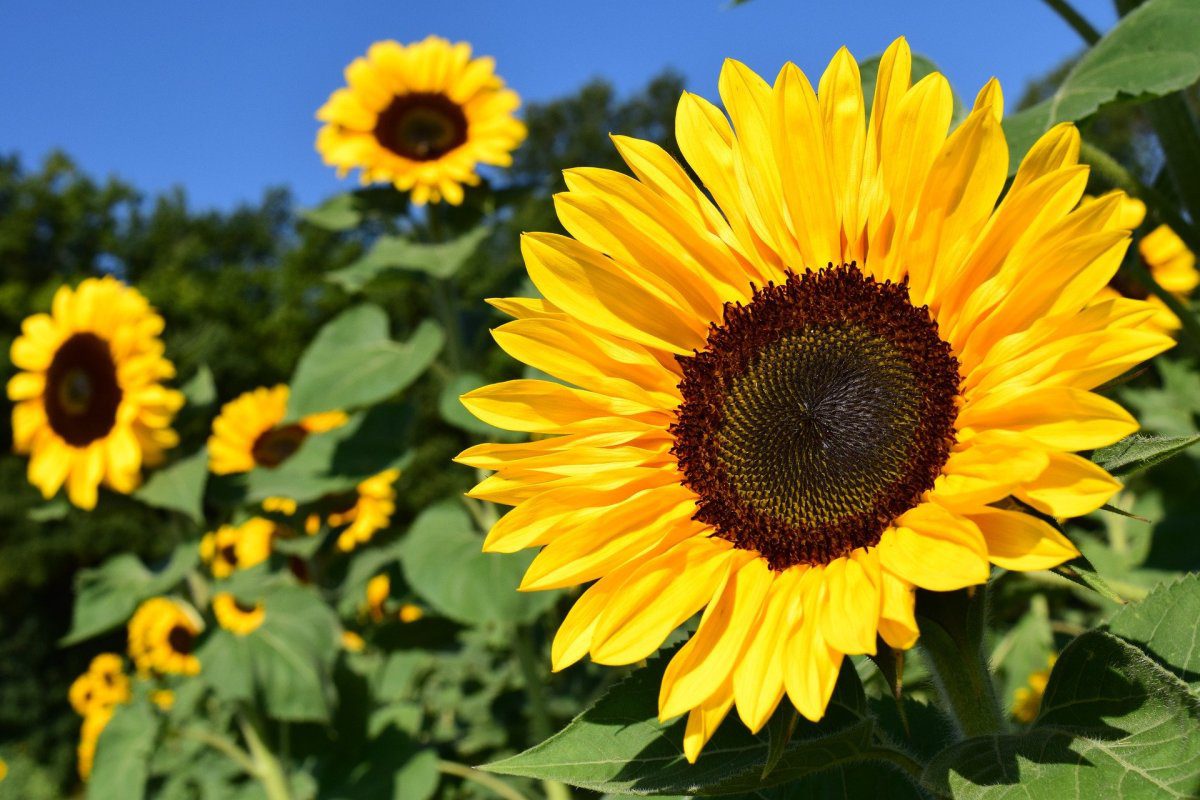Plants are diverse and fascinating beings, often overlooked in daily life. This article explores the sunflower and Venus flytrap, two unique plants. Sunflowers have large yellow blooms, rough leaves, and grow up to 6 feet tall. They convert sunlight into energy through photosynthesis and take up nutrients from the soil through their roots. In contrast, Venus flytraps have round leaves with traps that snap shut when insects land on them. They digest their prey to obtain nutrients like nitrogen and phosphorus. Sunflowers have many uses, including as a source of food and ornamental decoration, while Venus flytraps provide insight into life’s diversity.
Sunflower vs. Venus Flytrap: The Fascinating World of Plants
Plants are fascinating beings that often go unnoticed in our day-to-day lives. From towering trees to delicate flowers, the plant kingdom is a vast and diverse world that never ceases to amaze us. In this article, we’ll explore two fascinating plants: the sunflower and the Venus flytrap.
Appearance and Habitat
The sunflower (Helianthus annuus) is an iconic plant known for its large yellow blooms and towering height, often reaching 6 feet or more. The plant is native to North America and is commonly found in open fields and meadows. The leaves are rough and hairy, often clustered around the base of the stem.
In contrast, the Venus flytrap (Dionaea muscipula) is a carnivorous plant known for its unique trap mechanism. It has round leaves with trap-like structures at the end that snap shut when an unsuspecting insect lands on its surface. The plant is native to the wetlands of the southeastern United States and is typically found in acidic soils.
Nutrition and Adaptations
Sunflowers are known for their ability to convert sunlight into energy through the process of photosynthesis. They are also able to take up nutrients from the soil through their roots. Sunflowers have a taproot that can reach deep into the soil to access water and minerals.
The Venus flytrap, on the other hand, has evolved a unique method of obtaining nutrients. As a carnivorous plant, it is able to trap and digest insects in order to obtain nutrients like nitrogen and phosphorus. The trap mechanism is comprised of specialized hair-like structures that detect the presence of prey. When triggered, the trap snaps shut, sealing the insect inside. The plant then releases digestive enzymes to break down the prey and absorb the nutrients.
Uses and Benefits
Sunflowers have a variety of uses and benefits. The seeds are often used as food and are a good source of healthy fats, protein, and fiber. Sunflower oil is commonly used in cooking and has many health benefits, including being high in vitamin E and antioxidants. In addition, sunflowers are often used for ornamental purposes and can add a pop of color to any garden or landscape.
The Venus flytrap, while not used for food or ornamental purposes, is a fascinating plant that has captured the attention of scientists and nature enthusiasts alike. Its unique adaptations provide insight into the incredible diversity of life on our planet.
Conclusion
While the sunflower and Venus flytrap may seem like vastly different plants at first glance, they both possess unique and fascinating characteristics that make them stand out in the plant kingdom. From the towering beauty of the sunflower to the carnivorous adaptations of the Venus flytrap, these plants remind us of the incredible diversity and complexity of life on our planet.
